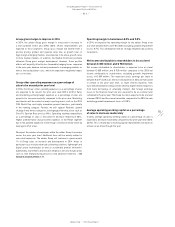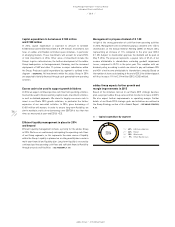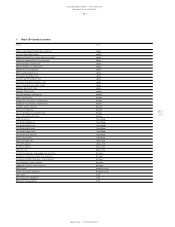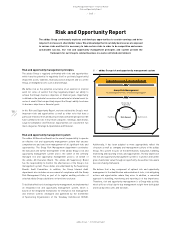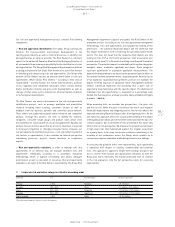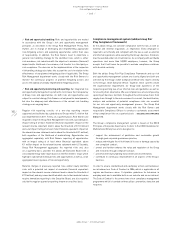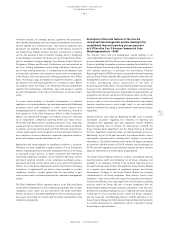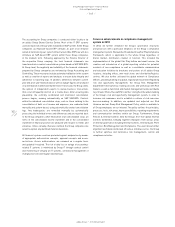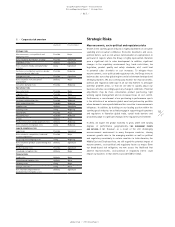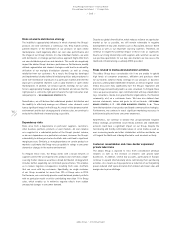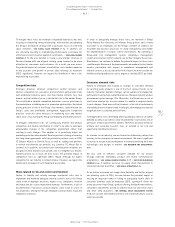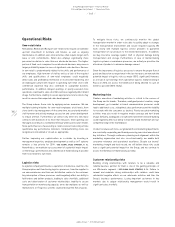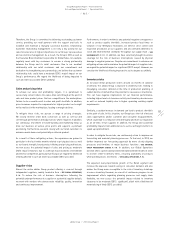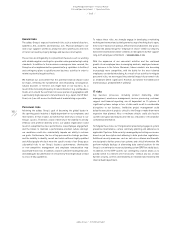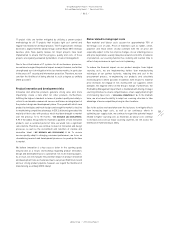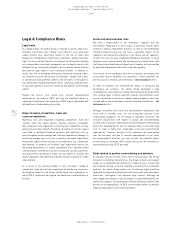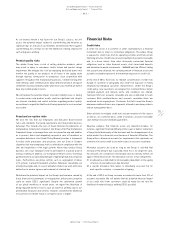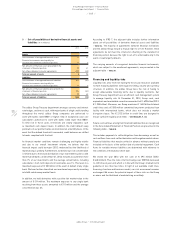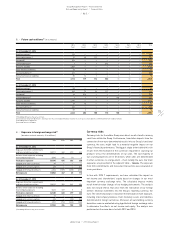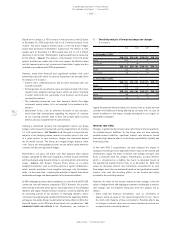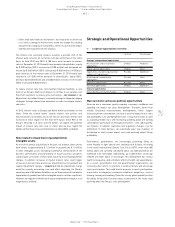Reebok 2013 Annual Report Download - page 169
Download and view the complete annual report
Please find page 169 of the 2013 Reebok annual report below. You can navigate through the pages in the report by either clicking on the pages listed below, or by using the keyword search tool below to find specific information within the annual report.
adidas Group
/
2013 Annual Report
Group Management Report – Financial Review
165
2013
/
03.5
/
Risk and Opportunity Report
/
Strategic Risks
To mitigate these risks, we maintain a regionally balanced sales mix,
focusing on cementing strong relationships with retailers and adapting
the Group’s distribution strategy with a particular focus on controlled
space initiatives
/
SEE GLOBAL SALES STRATEGY, P. 72. In addition, we
are constantly investing in strengthening brand equity to increase the
attractiveness and consumer appeal of our products
/
SEE GLOBAL BRANDS
STRATEGY, P. 77. We also decided to create a new market structure in
Western Europe with one aligned strategy going forward to be more
attractive for consumers and customers. As a result, we now assess
the potential impact of customer consolidation, cross-border expansion
of key accounts and growth of private label offerings as moderate
(2012: significant). However, we regard the likelihood of these risks
materialising as possible.
Competition risks
Strategic alliances amongst competitors and/or retailers and
intense competition for consumers and promotion partnerships from
well-established industry peers and new market entrants (e.g. new
brands, vertical retailers) pose a substantial risk to the adidas Group.
This could lead to harmful competitive behaviour, such as price wars in
the marketplace or bidding wars for promotion partnerships. Sustained
pricing pressure in one of the Group’s key markets could threaten the
Group’s sales and profitability development. Aggressive competitive
practices could also drive increases in marketing costs and market
share losses, thus hurting the Group’s profitability and market position.
To mitigate competition risks, we continuously monitor and analyse
competitive and market information in order to be able to anticipate
unfavourable changes in the competitive environment rather than
reacting to such changes. This enables us to proactively adjust our
marketing activities when needed. We also pursue a strategy of entering
into long-term agreements with key promotion partners such as FIFA,
FC Bayern Munich or Derrick Rose, as well as adding new partners
to refresh and diversify our portfolio, e.g. Juventus FC, Mesut Özil or
Jeremy Lin. In addition, our product and communication initiatives are
designed to drive market share growth and to strengthen our brands’
market position. As a result, we now assess the potential impact of
competition risks as significant (2012: major) although we expect
competition in our industry to remain intense. However, we regard the
likelihood of an impact of such magnitude as possible.
Risks related to risk and control environment
Failure to identify and actively manage substantial risks and to
implement and maintain adequate internal controls across the Group
could result in improper decisions, higher costs, compliance violation
and fraud and also cause reputational damage. Furthermore, a lack of
documentation of processes and procedures could result in a lack of
risk awareness among the Group’s employees and facilitates fraud and
compliance violations.
In order to adequately manage these risks, we maintain a Global
Policy Manual that illustrates all relevant Group policies and is freely
accessible to all employees via the Group’s intranet. In addition, we
document key business processes to create transparency and enable
the implementation of proper control mechanisms. By operating a
Group-wide risk management system, compliance management
system and internal control network, we further mitigate these risks.
Nonetheless, we continue to believe the potential impact of these risks
could be major. Because of the improvements we made in the last twelve
months, particularly with respect to compliance management and
internal controls as discussed earlier in this report, we now consider the
likelihood of being affected to such a degree as unlikely (2012: possible).
Consumer demand risks
Failure to anticipate and respond to changes in consumer demand
for sporting goods products is one of the most serious threats to our
industry. Consumer demand changes can be sudden and unexpected,
particularly in our fashion-related businesses. Because industry product
procurement cycles average 12 to 18 months, the Group faces a risk of
short-term revenue loss in cases where it is unable to respond quickly
to such changes. Even more critical, however, is the risk of continuously
overlooking a new consumer trend or failing to acknowledge its potential
magnitude over a sustained period of time.
To mitigate these risks, identifying and responding to shifts in consumer
demand as early as possible is a key responsibility of our brands and, in
particular, of the respective Risk Owners. Therefore, we utilise extensive
primary and secondary research tools as outlined in our risk and
opportunity identification process.
As a leader in our industry, we are focused on influencing rather than
reacting to the changing consumer environment. We invest significant
resources in research and development to innovate and bring fresh new
technologies and designs to market
/
SEE RESEARCH AND DEVELOPMENT,
P. 99.
We also seek to enhance consumer demand for our brands
through extensive marketing, product and brand communication
programmes
/
SEE GLOBAL BRANDS STRATEGY, P. 77
/
SEE OTHER BUSINESSES
STRATEGY, P. 86. In addition, we focus on supply chain improvements to
shorten production lead times
/
SEE GLOBAL OPERATIONS, P. 94.
As we further increased our supply chain flexibility and further aligned
our planning cycles in 2013, we now believe the potential impact of
missing an important trend or failing to adequately tackle shifts in
consumer demand could be moderate (2012: significant). Given the
broad spectrum of our Group’s product offering, feedback from retailers,
consumers and athletes as well as evidence from our own-retail stores
and other early indicators
/
SEE INTERNAL GROUP MANAGEMENT SYSTEM,
P. 118, we consider the likelihood of these risks materialising to such an
extent as possible.


